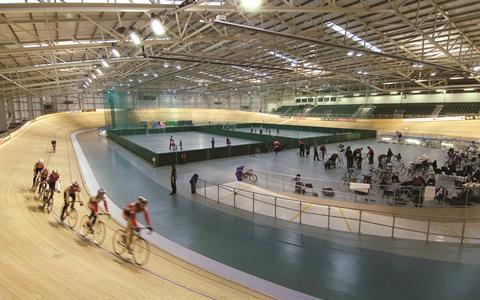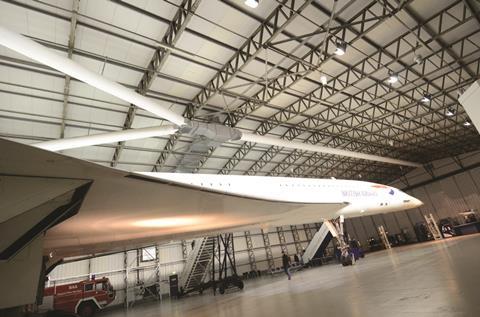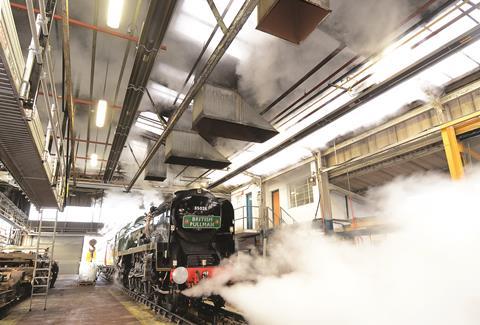New legislation is about to change the way that the seasonal efficiency of heating equipment is calculated. This CPD module, sponsored by Nortek Global HVAC, outlines the key points

How to take this module
UBM’s CPD distance-learning programme is open to anyone seeking to develop their knowledge and skills. Each module also offers members of professional institutions an opportunity to earn between 30 and 90 minutes of credits towards their annual CPD requirement.
This article is accredited by the CPD Certification Service. To earn CPD credits, read the article and then click the link below to complete your details and answer the questions. You will receive your results instantly, and if all the questions are correctly answered, you will be able to download your CPD certificate straight away.
CPD CREDITS: 60 MINUTES
DEADLINE: 27 OCTOBER 2017

INTRODUCTION
Gas-fired warm air and radiant-heating systems are well-established technologies for heating large, open, typically industrial or commercial spaces. Burning fuel at the point of use currently provides an efficient thermal and seasonal efficiency. However, the way in which manufacturers calculate seasonal efficiency will change from 1 January 2018, when European legislation on energy-related products (ErP) comes into force. This CPD will provide an insight into the impact of this legislation on the selection of heating equipment.

TYPES OF HEATER
Warm air heaters consist of a gas burner, heat exchanger, flue fan and supply air fan. Once the burner is operating, air is taken from the space, passed over the heat exchanger and the resulting warm air is blown into the space. The supply air fan ensures a good and even distribution of heat within the space.
Radiant heaters consist of a burner, combustion/flue fan, heat emitter tubes and reflectors. Mounted overhead, radiant tube heaters produce infrared heat that is directed downwards to lower levels by the reflector.
Because gas-fired warm air and radiant heaters operate under the same conditions at all times, Building Regulations Part L2A (as of 2017) states that “heat generator seasonal efficiency is equivalent to the appliance’s measured steady state thermal efficiency (net calorific value)”. The effective seasonal efficiency is calculated by taking the heat generator seasonal efficiency and adding a number of heating efficiency credits, determined by the features of the system. These are shown in tables 1 and 2 overleaf.
For example, a warm air heating system with optimum stop controls and a modulating burner earns a total of four heating efficiency credits (1% + 3% = 4%). So to calculate the effective heat generator seasonal efficiency, the net thermal efficiency of 91% should be added to the 4% heating efficiency credits. The effective heat generator seasonal efficiency is therefore 95%, exceeding the minimum standard by 4 percentage points. The value that should be entered into the accredited NCM tool to calculate the carbon dioxide emission rate is 95%.
NCM, the National Calculation Method for the Energy Performance of Buildings Directive, is the procedure for demonstrating compliance with Building Regulations (for buildings other than dwellings), by calculating the annual energy use for a proposed building and comparing it with the energy use of a comparable “notional” building. Both calculations make use of standard sets of data for different activity areas and call on common databases of construction and service elements.
The NCM allows the actual calculation to be carried out either by approved simulation software or by a simplified tool based upon a set of CEN standards. One of those tools is called SBEM (which stands for Simplified Building Energy Model).
However, from 1 January 2018 this will change and manufacturers will calculate seasonal efficiency in accordance with ErP 2018 instead.
Table 1: Recommended minimum effective heat-generator seasonal efficiency, from Part L2A
| Appliance type | Effective heat generator seasonal efficiency (net calorific value). Thermal | Effective heat generator seasonal efficiency (net calorific value). Radiant |
|---|---|---|
| Warm air heaters, types 1 and 2 | >91% | n/a |
| Non-luminous radiant heater | >86% (unitary) >91% (multi-burner) |
55% n/a |
Table 2: Heating efficiency credits, from Part L2A perimeter/area ratios
| Appliance type | Warm air heaters | Radiant heaters |
|---|---|---|
| Optimum start | – | 0.5% |
| Optimum stop | 1% | 1% |
| Zone control | – | 1% |
| High/low burner | 2% | – |
| Modulating burner | 3% | – |

ENERGY-RELATED PRODUCTS 2018
ErP is part of the European Commission Regulation (EU) 2015/1188 on Ecodesign requirements for local space heaters. Along with the implementing Directive 2009/125/EC, it aims to improve the energy efficiency and other environmental performance criteria of energy-related products such as radiant and warm air heaters.
For ErP, products have been divided into product groups or “lots”, with warm air heaters using gaseous or liquid fuels contained within lot 21 and radiant heaters within lot 20.
Each lot provides the minimum energy efficiency and environmental values for each heating technology. Any product that does not comply with the requirements cannot be marketed and sold within the EU, including in the UK.
Even though the UK is in the process of leaving the EU, suppliers to the UK will still have to comply with the Ecodesign requirements in the meantime. Even when the UK is no longer in the EU, unless new UK legislation is introduced, ErP will continue to be one of many methods employed by the UK government to reduce the environmental impact of heating technology.
- Lot 20 (radiant heaters) sets a max NOx emission of 200mg/kWhinput plus a minimum seasonal efficiency of 74%. Seasonal efficiency is a combination of thermal efficiency, radiant efficiency and electrical power consumption.
- Lot 21 (warm air heaters) sets a max NOx emission of 100mg/kWhinput plus a minimum seasonal efficiency of 72%. Seasonal efficiency is calculated from air flow temperature rise, thermal efficiency and electrical power consumption.
Lot 21 also applies to air-handling units and includes the performance of any heating/chilling coils, where human comfort is the primary heating purpose.
Essentially, other than outdoor units (used for heating an outdoor space), air curtains or ambient units, all products must comply with either lot 20 or lot 21, plus the ErP regulation on motor efficiency.
Each lot has a different implementation date:
- Lot 20 (radiant heaters): 1 January 2018
- Lot 21 (warm air heaters): minimum seasonal efficiency comes into force on 1 January 2018; maximum NOx levels will be applicable from September 2018.
There will be a second tier of ErP in 2021, when minimum seasonal efficiency will increase to 78% and maximum NOx emission for gaseous fuels will be reduced to <=70mg/kWhinput.
Crucially, the minimum criteria for lots 20 and 21 are applicable to new installations as well as when replacing existing products. As a result, customers can be assured that the heating equipment they are purchasing is highly energy efficient and that emissions of harmful environmental pollutants are constrained.
Unlike other products, warm air heaters and other commercial heating appliances are directly planned and purchased by building services professionals, so regulation 2015/1186 excludes them from mandatory energy labelling. However, product literature and manufacturers’ websites must indicate the seasonal efficiency and NOx emissions for each product or system.
Air curtains are not considered warm air heaters under this directive.

IMPACT OF ERP ON PRODUCTS
The new legislation will affect the range of products offered by manufacturers. Some of the older technologies will be withdrawn or modified to ensure compliance.
On first inspection, ErP seasonal efficiency appears to be a lot lower than the current Building Regulations seasonal efficiency calculation. However, when these minimum thermal and radiant efficiencies are added into the ErP seasonal efficiency calculator, the approximate results are as follows:
- Gas fired warm air heaters (atmospheric) = 70% (2% lower than current regulation)
- Radiant (unitary) heaters = 71% (3% lower than current regulation)
Therefore, a net increase of approximately 2% will apply to warm air heaters and 3% to unitary radiant heaters manufactured from 1 January 2018 onwards.
As mentioned before, ErP seasonal efficiency is calculated differently and produces a different result. This figure will be far lower than those previously used in the NCM tool, so designers should ensure that the relevant seasonal efficiency figure is entered when carrying out their calculations.


How to take this module
UBM’s CPD distance-learning programme is open to anyone seeking to develop their knowledge and skills. Each module also offers members of professional institutions an opportunity to earn between 30 and 90 minutes of credits towards their annual CPD requirement.
This article is accredited by the CPD Certification Service. To earn CPD credits, read the article and then click the link below to complete your details and answer the questions. You will receive your results instantly, and if all the questions are correctly answered, you will be able to download your CPD certificate straight away.
CPD CREDITS: 60 MINUTES
DEADLINE: 27 OCTOBER 2017
Privacy policy
Information you supply to UBM Information Ltd may be used for publication and also to provide you with information about our products or services in the form of direct marketing by email, telephone, fax or post. Information may also be made available to third parties. UBM Information Ltd may send updates about Building CPD and other relevant UBM products and services. By providing your email address you consent to being contacted by email by UBM Information Ltd or other third parties. If at any time you no longer wish to receive anything from UBM Information Ltd or to have your data made available to third parties, contact the Data Protection Coordinator, UBM Information Ltd, FREEPOST LON 15637, Tonbridge, TN9 1BR, Freephone 0800 279 0357 or email ubmidpa@ubm.com. View our full privacy policy at www.building.co.uk/cpd
Downloads
Cpd accreditation logo
Other, Size 0.15 mb





























No comments yet